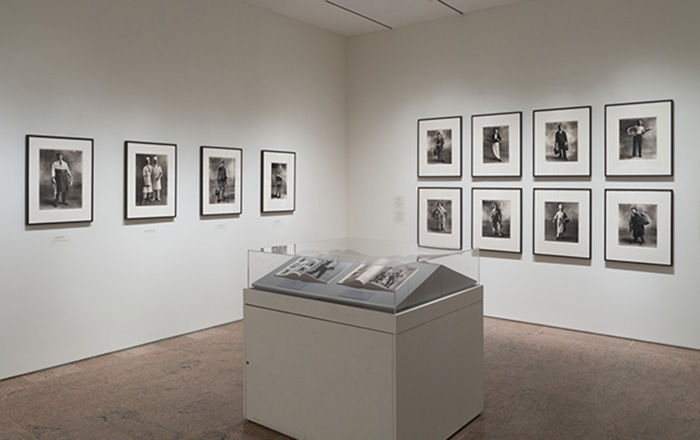[The Ascent of Mont Blanc]
Auguste-Rosalie Bisson French
Photography Studio Bisson Frères French
Not on view
While the transport of photographic equipment and the manipulation of chemical solutions for the wet collodion process was never an easy task, no more audacious challenge was undertaken in the early history of photography than the ascent of Mont Blanc and the making of views at the summit of the highest peak in the Alps. Attempted unsuccessfully by the Bisson Frères in 1860, the goal was achieved by the younger Bisson the following year, aided by an experienced guide and twenty-five porters carrying his plates, cameras, chemicals, and portable darkroom tent. Notwithstanding the paralyzing cold, a blinding snowstorm, avalanches, and the expected nausea and vertigo of high-altitude exploration, the team reached the 15,781-foot summit on July 25, 1861. Bisson exposed three negatives.
It was only after his primary goal had been achieved that Bisson halted his descent in order to set up the tent and cameras once again, pose the figures in positions emblematic of their climb, and make pictures of the "ascent" (though the team's tracks are visible on the high snowy slope in the background). Bringing his Parisian clientele a virtual experience few would ever realize in fact, Bisson was one of many photographers whose explorations of the globe dramatically expanded the known world for nineteenth-century urban audiences.
This image cannot be enlarged, viewed at full screen, or downloaded.
This artwork is meant to be viewed from right to left. Scroll left to view more.
![[The Ascent of Mont Blanc], Auguste-Rosalie Bisson (French, 1826–1900), Albumen silver print from glass negative](https://images.metmuseum.org/CRDImages/ph/web-additional/DP139264.jpg)
![[The Ascent of Mont Blanc], Auguste-Rosalie Bisson (French, 1826–1900), Albumen silver print from glass negative](/Rodan/dist/img/1x1-d7dcde.gif)
![[The Ascent of Mont Blanc], Auguste-Rosalie Bisson (French, 1826–1900), Albumen silver print from glass negative](https://images.metmuseum.org/CRDImages/ph/original/DP139268.jpg)
